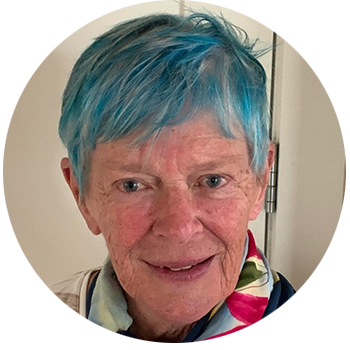
Stella Atkins
Professor Emerita, School of Computing Science
Simon Fraser University
Dr. Stella Atkins joined SFU as an Assistant Professor in 1985, and worked there until she retired in 2010. Her major career contributions have been in establishing interdisciplinary teams involving medical professionals, scientists and engineers, to improve health care, through research, teaching, and involvement with industry. The impacts are far-reaching; her many former students and colleagues are now paving the way towards better understanding of medical images, better surgery training, and earlier diagnosis and monitoring of several diseases.
Early work studying the interaction between radiologists and 2D medical image films helped to help design modern systems for radiologists to interact with and analyse digitized 3D MRI and CT images displayed on many monitors. Her team’s analysis of the head images obtained in MRI scans led to practical methods to quantify the amount of brain plaque, allowing early diagnosis of multiple sclerosis (MS) and brain atrophy, leading to better health outcomes for patients.
While examining radiologists’ interactions with digital MRI and CT images, Dr. Atkins became interested in a new technology – that of eyegaze tracking with portable eyeglasses, or with cameras located beneath a display monitor. This research led to a new understanding of how radiologists search for lesions while scanning through many 2D digital “slices” of 3D body structures. Methods to improve accuracy and efficiency are based on her team’s research.
Other applications for eyegaze tracking in the medical arena became fruitful from 2002 through collaborations with surgeons and trainee surgeons. Dr. Atkins’ team pioneered the use of eyegaze tracking during actual laparoscopic surgeries performed at UBC, and led to many exciting discoveries about how surgeons view the 3D scene inside the body on a 2D screen, how they learn to perform eye-hand coordination, and how virtual surgery simulations can be designed for best learning outcomes. This research is being continued by Dr. Bin Zheng, Director and Chair of Surgery Simulation at the University of Alberta, and has led to many innovative ideas for improving surgery training.
In the late 1990s Dr. Atkins became involved in analyzing Dermatological color images through research collaborations with the Vancouver Skin Care Centre. In 2008 Dr. Atkins became an adjunct member of the UBC Department of Dermatology, which hosted the major 4-yearly International Dermatology conference, held in Vancouver in 2015. Her former graduate student Dr. Maryam Sadeghi founded a company in Vancouver, MetaOptima Inc., for providing smart skin analytics. MetaOptima has become a world-leader in machine learning algorithms to detect melanomas and other skin diseases, based on exposure at the conference. Dr. Atkins is Chief Scientific advisor to the company, using machine learning and teledermatology for diagnosing skin diseases. The company has registered over two million patients and many thousands of skin clinics throughout the world.
She has published over 65 journal papers, nearly 200 refereed conference papers and 2 patents (on skin imaging).
At every step in her computing career, she has been a pioneer, applying her computing skills to new application domains in medicine. She has been a mentor to over 60 undergraduate and graduate students, many of whom are women, and won SFU’s first award for graduate supervision.
